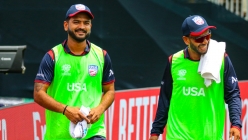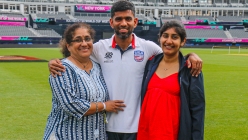Younger cricketers need advice and mentoring
2010 May 25 by Suresh Menon
By issuing show cause notices to the players, the Board is seeking to deflect the criticism of its own role in Indiaaâ?s poor performance at the World Cup.
Now, you can get all the USA Cricket updates via Facebook. Also follow us on Twitter via @dreamcricket
By Suresh Menon
Comments
Traditionally in cricket, the senior players in a team act as mentors for the newcomers. When a 16-year-old Sachin Tendulkar made his debut in Pakistan two decades ago, Sanjay Manjrekar, older by seven years, and seen those days as a potential India captain, mentored his Mumbai colleague. In his autobiography M.C.C., Colin Cowdrey has written about how on his first tour, the England skipper Len Hutton sought out Cowdrey Sr. and assured him, “I’ll look after him.”
When Mohammad Azharuddin made his debut, Sunil Gavaskar quickly realizing the pressure the youngster might be under after making three centuries in a row, advised him on matters ranging from carriage to finance.
Like in any other field of human endeavour, the youngsters learn from watching the experienced in action. There is so much experience in the Indian Test team that newcomers enter it as they would a university. A partnership with Sachin Tendulkar in the middle is probably worth a few seasons on the first class circuit. Likewise bowling with Zaheer Khan or fielding next to Rahul Dravid at slip.
Over the years, senior players have played mentor and protected the youngsters from the tormentors within and outside the system.
The system works best in Tests where the difference in levels of experience is usually significant. In the Twenty20 that is not so. As Anil Kumble pointed out recently, “There’s the pressure of performance, the pressure of expectations, pressure from a very intrusive media including former players. These can overwhelm a young man suddenly rich and famous coming to terms with his new status. It’s important to prepare him to manage life during and beyond cricket.”
The so-called brawl in St Lucia in which Indian players may or may not have been involved might have been handled better by those experienced not just in the ways of fandom, but in the ways of the cricket board. By issuing show cause notices to the players, the Board is seeking to deflect the criticism of its own role in India’s poor performance at the World Cup.
Sadly, players have to learn not only to handle the public but also how to deal with the Board and ensure they do not end up as pawns in the larger political game. With the Board under pressure for India’s lackadaisical showing, it needed to find scapegoats fast, and a few players dining out after they were eliminated from the tournament must have come as a godsend.
This is not to suggest that all players are saints, merely to point out the range of problems that confronts them. India have been fortunate in recent years to have had quality players and men of the stature of Tendulkar, Rahul Dravid, V V S Laxman, Anil Kumble as the backbone of the team. We have been spoiled by their immaculate behaviour on and off the field, and have forgotten how pressure can get to a player. There has been no need for a psychologist or mentor outside of the playing group.
Now thanks to the IPL and the opportunities it provides, players are coming into the Indian team incompletely educated, and with their ideas skewed by the money they make. While a professional coach with the requisite certificate can handle the cricketing problems on the field, it takes a special kind of professional to instruct players on how to handle themselves off the field. Perhaps the time has come to put players through a finishing school before they are qualified to play for India.
As younger players are thrown into the complex world of international sport, the need for sage advice is ever more pressing.




